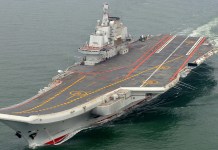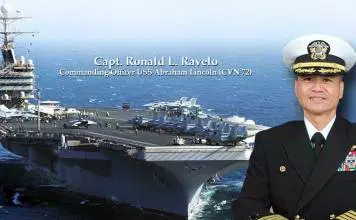There’s a developing acknowledgment in Asia and the United States that the China’s Peoples Liberation Army is bit by bit coming closer to building up a far reaching “counter-intervention” capability, better referred to in the Western strategic debate as “anti-access/ area denial.”
The newly released US Defense Department report on China’s Military is further testimony to China’s becoming a major military power in Asia.
As Defense Secretary Ash Carter offered up some obtuse talk on Beijing saying the Pentagon needed to spend more money on hi-tech weapons to hold China within proper limits and keep them in close monitoring particularly amid spiking tensions in the South China Sea.
Carter said, when asked about U.S. warships sailing near reefs and islands claimed by Beijing in the West Philippine Sea, there would no let up. “We have to react,” he said at an event unveiling next year’s proposed Defense spending plan.
“We’re going to fly and sail and operate where the international law permits, period!”
He spoke days after a U.S. guided-missile destroyer, the USS Curtis Wilbur,passed near the disputed island of Triton in the Paracel Islands in the South China Sea, drawing strong objections from Beijing.
And the Pentagon chief also said driven arrangements for military spending on modern weaponry for the financial year 2017 were somewhat composed in view of China.
Carter said. “We’re making all these investments that you see in our defense budget that is specifically oriented towards checking the development of the Chinese military.”
To fight off China’s expanding military force, including its ship killing missiles and electronic warfare, the $582.7 billion defense budget request calls for major spending on cyber security, more firepower for submarines, new robotic boats, and underwater vessels as well as new missile interceptors to be installed on American warships.
Carter said in his speech that, both Russia and China were “developing weapons and ways of war that seek to achieve their objectives rapidly, before — they hope — we can respond.”
He said, “the military spending was aimed at placing a higher priority on the threats posed by both powers.”
Carter also said the assertive moves of China had alienated countries in the South China Sea where it has constructed a network of artificial islands with airstrips and deep harbors. But that it had bought Washington goodwill among old allies and new partners.
“They’re having the effect — and I don’t know when this will dawn on them — of causing widespread concern in the region, which makes others react, including others react by joining up with us,” he said in a question-and-answer session following his budget speech at the Economic Club of Washington.
As a result, Vietnam was “very eager” to bolster its maritime security cooperation with U.S. forces, along with traditional allies such as Australia, the Philippines, and Japan, he said.
China was engaged in “self-isolating behavior” and the United States was not about to scale back its presence, he said.
For China “to disrupt the security environment where half of humanity lives and half of humanity’s economic behavior is, is not a good idea on their part,” Carter said. “But certainly for our part, we intend to continue our strong role there.”
With the China’s growing maritime assertiveness, the Pentagon is asked to provide the US Congress with a comprehensive, realistic assessment of the PLA’s evolution. Analyzing the military capabilities of a player as opaque as China is always challenging and earlier reports sometimes appeared a bit alarmist regarding certain PLA capability areas. But overall, the reports struck a balance between progress and shortfalls. - Carl E.








